

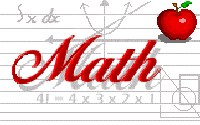
 |
 |
 |
[Introduction]
[Task]
[Process]
[Resources]
[Evaluation]
[Conclusion]
[Teacher Notes] [PowerPoint Presentation Download] [PowerPoint Presentation on the Web]
Introduction
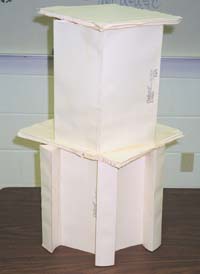
The Task
The Process
You don't have any time to waste. So get started with this plan for your
week.
Days 1 and 2: Research
Rigidity is a term often associated with triangles. Why? Are there three-dimensional shapes that should also be in a discussion of strength and rigidity? All structures are always in either tension or compression. Structures can only pull or push. What does it mean that a structure is in tension or compression?
Get started on finding answers to your questions as given on the worksheets linked below. (These should be worked on in class AND as HOMEWORK!)
| Design Engineer | Strength Engineer | Height Engineer | Journalist |
Your research, homework, and interviews should help you gain some valuable knowledge about structures and strength.
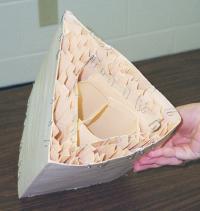
Once your group is equipped with more knowledge of structures and strength you will be ready to create a structure. Using only white glue, 25 file folders and what you've learned about rigidity and strength from your experience and other resources, your experiments, and your research, you and your group are to create a structure that will hold the most weight, be very tall, or a combination of both. Can you cut the folders? YES...you can cut them and use white glue to glue them together. You can use paper clips to hold the folders together while they dry but they must be removed from the structure before testing.

You will be working in groups of 4 students. You will be given one file folder to explore first and then your group will be given 25 new ones for the project. This will ensure that all of the file folders are the same weight and size. Your group must plan well to make sure that you will be able to complete your structure in four class periods. All structures must be completed in class. You may not take your structure home to work on it.
Be creative with your design. You will want to discuss this project with other people - students, parents, friends, others - via conversations, e-mail, etc.
2. Communicating and Evaluating your knowledge: 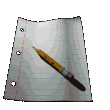 Your group can choose to either write a report or create a Web page report to submit with your structure. The reports will be submitted both on disk and as a hard copy. The JOURNALIST is to coordinate (not do it all) this effort. This report is to include:
Your group can choose to either write a report or create a Web page report to submit with your structure. The reports will be submitted both on disk and as a hard copy. The JOURNALIST is to coordinate (not do it all) this effort. This report is to include:
At the end of the report, list the people interviewed by the team. Also include a complete bibliography of
resources used - both printed and Web pages.

Assign one member of the group to be the photographer. You will have the opportunity to use the digital camera to take pictures of your structure as you construct it. Photographs are to be used to document your design and building process as well as your final structure. A disk should be available during class to work on your report and to put photos on. Some of these should be used either in your report or on your Web page.
Unlike your structures, these reports/Web pages probably will be completed outside of class. You and your groups can get together after school or communicate by phone or e-mail. At the end of the printed copies of the report attach the answers to all of your research questions and all of the completed interview worksheets.

Testing the structures:
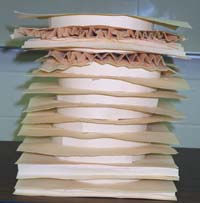 Communicating your Learning...
Communicating your Learning...
Finally, write a report or design a Web page addressing the facts above. Include a complete list of Internet sites, bibliography of books and people interviewed during this project. Attached to the report (on disk and on paper) or
Web page (on disk with printout) should be the answers to the research questions, each of the completed interview sheets, and your answers to the reflective follow-up questions. It is recommended that all parts of the report be completed (except for the reflective
follow-up questions) before the structures have been tested. The due date for the report will be given in class.
Resources
Internet Resources
| Web Searching Links | Tension and Compression Lesson |
| PowerPoint Presentation Download | PowerPoint Presentation on the Web |
| The 25 Tallest Skyscrapers | Skyscraper Links |
Evaluation
Conclusion
[Introduction]
[Task]
[Process]
[Resources]
[Evaluation]
[Conclusion]
[Teacher Notes]
[PowerPoint Presentation Download]
[PowerPoint Presentation on the Web]
This project was created by Nancy Powell for Geometry Classes at Bloomington High School, Bloomington, IL. I welcome your comments and questions.